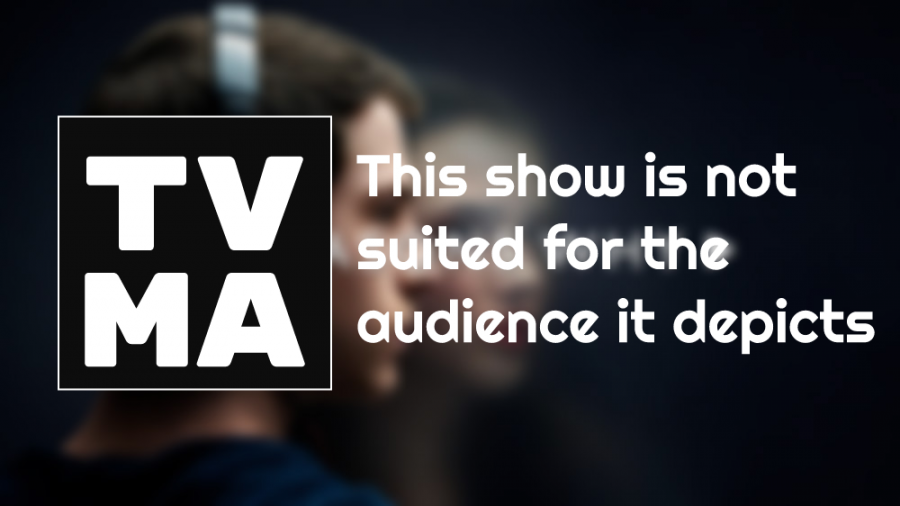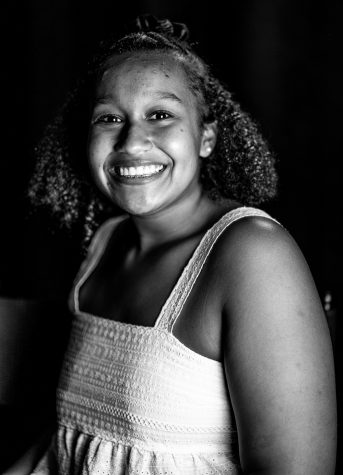Rated M for Mature
Should teenagers be allowed to watch shows that depict other teens engaging in risky behavior?
Shielding teenagers from mature content in shows that depict teenage life only does more damage.
October 2, 2019
Raising children today could not be more different than in past eras. The world keeps changing, and the teenagers today are dealing with completely different circumstances than their parents dealt with in their teenage years. Due to advances in technology, changing social beliefs, and constant exposure to media, adolescents have a lot of new problems and situations that their parents are perhaps not especially equipped to understand.
Recently, there has been a push for TV shows that reflect the reality of high school. The problem is that these shows are not sitting well with parents and guardians who are raising teenagers in high school. Shows like 13 Reasons Why, Euphoria, and Sex Education have caused concern because of the on-screen depiction of themes many adolescents deal with. Between predictable scenes of bullying, awkwardness, angst, and anger, there are more mature scenes of substance abuse, sexual and physical assault, sexual identity, depression, and suicide.
In a Fox News article, Tim Winter, the Parents Television Council President, said, “HBO, with its new high school centered show Euphoria, appears to be overtly, intentionally, marketing extremely graphic adult content…to teens and preteens.”
Yet such shows are made to start conversations about the tough topics that today’s youth face, and it would be ignorant for adults to believe that high school is accurately represented by High School Musical.
All three of the shows listed above have characters who deal with teenage pregnancy. Let’s be honest — sex is a taboo subject, especially when associated with teenagers. But according to the US National Library of Medicine, using data from 21 countries, the rate of pregnancy among fifteen to nineteen-year-olds was the highest in the United States (57 pregnancies per 1000 females). In another study, done by the U.S. Department of Health & Human Services, “in 2013, the majority of pregnancies to adolescent females ages 15-19 in the United States — an estimated 61 percent — ended in a live birth; 15 percent ended in a miscarriage; and 25 percent ended in an abortion.”
Needless to say, teenagers are dealing with sex and in some cases getting pregnant, so seeing characters going through the same problems is hardly irrelevant.
Each of these shows has at least one character in the LGBTQ+ community. As such, they open our eyes to what LGBTQ+ teenagers have to deal with in their home and school lives. On a more positive note, the shows also demonstrate that it is not abnormal to be LGBTQ+. In Pennsylvania alone, based on results from a study by the UCLA Williams Institute, 27 percent of the population under 18 are in the LGBTQ+ community.
Additionally, these shows illustrate that teenagers are not alone when they are sad or anxious. The John Hopkins Health Review states, “The National Institute of Mental Health estimates the 3 million adolescents age 12 to 17 have had at least one major depressive episode in the past year. Teen depression appears to be on the rise equally among urban, rural, and suburban populations.” Furthermore, the Anxiety and Depression Association of America describes that 25.1% of children ages thirteen to eighteen-year-olds are affected by anxiety disorders. Shows that dive into mental health and suicidal thoughts, like 13 Reasons Why, are rare, but teenagers need to know that whatever they are feeling inside is important.
In 2017, once again based on the U.S. Department of Health & Human Services, 36 percent of high school students have admitted to using marijuana, 44 percent get their alcohol from other people, 13 percent use electronic vapor products, and 41 percent have tried to quit using tobacco products in the past year. It is thus educational to observe characters’ hardships in these regards. Euphoria, for example, portrays the consequences and heartbreaking truths of the characters who abuse drugs and alcohol.
13 Reasons Why, Euphoria, and Sex Education contain mature themes, but so does high school. Parents and guardians who shield their high school children from shows that depict sophisticated topics must know that they cannot shield them from the same topics in their actual lives. In fact, it’s likely that, the more adults try hide these topics from their teenagers, the more secretive their kids will become.














Socrates • Oct 2, 2019 at 1:50 pm
Even Philosophy is something parents and schools should not shield kids away from. That stuff is the real world, and a Philosophy class at NA was LONG OVERDUE!!!!!!!!!!!!!!!!!!! More important and interesting thant like Calc or Chem.